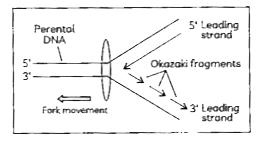In case of injury, enzyme thrombokinase responsible for
Release of heparin from monocytes in blood
Conversion of prothrombin into thrombin
Conversion of thrombin into prothrombin
Conversion of fibrinogen into fibrin
To solve the question regarding the role of the enzyme thrombokinase in case of injury, we will analyze the options provided and understand the process of blood clotting.
1. Understanding Blood Clotting:
- Blood clotting is a vital process that prevents excessive blood loss when an injury occurs. It involves a series of reactions that lead to the formation of a clot.
2. Role of Thrombokinase:
- Thrombokinase, also known as tissue factor or thromboplastin, is an enzyme released by damaged tissues and platelets during an injury. Its primary role is to initiate the clotting cascade.
3. Analyzing the Options:
- Option A: Release of heparin from monocytes in blood.
- Heparin is an anticoagulant and is not directly related to the action of thrombokinase.
- Option B: Conversion of prothrombin into thrombin.
- This is a key step in the clotting process. Thrombokinase catalyzes the conversion of prothrombin (a plasma protein) into thrombin (an active enzyme).
- Option C: Conversion of thrombin into prothrombin.
- This is incorrect as thrombin is not converted back into prothrombin.
- Option D: Conversion of fibrinogen into fibrin.
- While thrombin does convert fibrinogen into fibrin, this step occurs after prothrombin has been converted into thrombin by thrombokinase.
4. Conclusion:
- Based on the analysis, the correct answer is Option B: conversion of prothrombin into thrombin. This is the specific action of thrombokinase in the blood clotting process during an injury.
Final Answer:
The enzyme thrombokinase is responsible for the conversion of prothrombin into thrombin (Option B).
- Blood clotting is a vital process that prevents excessive blood loss when an injury occurs. It involves a series of reactions that lead to the formation of a clot.
- Thrombokinase, also known as tissue factor or thromboplastin, is an enzyme released by damaged tissues and platelets during an injury. Its primary role is to initiate the clotting cascade.
- Option A: Release of heparin from monocytes in blood.
- Heparin is an anticoagulant and is not directly related to the action of thrombokinase.
- Option B: Conversion of prothrombin into thrombin.
- This is a key step in the clotting process. Thrombokinase catalyzes the conversion of prothrombin (a plasma protein) into thrombin (an active enzyme).
- Option C: Conversion of thrombin into prothrombin.
- This is incorrect as thrombin is not converted back into prothrombin.
- Option D: Conversion of fibrinogen into fibrin.
- While thrombin does convert fibrinogen into fibrin, this step occurs after prothrombin has been converted into thrombin by thrombokinase.
- Based on the analysis, the correct answer is Option B: conversion of prothrombin into thrombin. This is the specific action of thrombokinase in the blood clotting process during an injury.
The enzyme thrombokinase is responsible for the conversion of prothrombin into thrombin (Option B).
Topper's Solved these Questions
Similar Questions
Knowledge Check
Enzyme polygalacturonase is responsible for
Avegetable softeningBfruit softeningCsugar caneDboth (1) & (2)In sugarcane plant , which of the following enzymes is responsible for the fixation on of .14CO2 in malic acid ?
AFructose phosphataseBRibulose bisphosphate carboxylaseCPhosphoenol pyruvic acid carboxylaseDRibulose phosphate kinaseYeast produces an enzyme complex that is responsible for fermentation. The enzyme complex is
AAldolaseBDehydrogenaseCInvertaseDZymase
Yeast secretes an enzyme, which is responsible for fermentation. This enzyme is
View SolutionYeast secrets an enzyme which is responsible for fermentation. This enzyme is :
View SolutionThe enzyme nitrogenase which is responsible for fixation of nitrogen contains the metal ion
View SolutionIn lac operon structural gene 'Z' is responsible for the synthesis of the enzyme:
View SolutionWhich of the following mineral ion is used in the activation of enzymes responsible for respiration and photosynthesis?
View Solution

